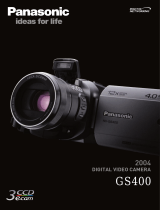
4 5
FCC Note: (U.S. only)
This equipment has been tested and found to comply with the limits for
a Class B digital device, pursuant to Part 15 of the FCC Rules. These
limits are designed to provide reasonable protection against harmful
interference in a residential installation. This equipment generates, uses,
and can radiate radio frequency energy and, if not installed and used in
accordance with the instructions, may cause harmful interference to radio
communications. However, there is no guarantee that interference will
not occur in a particular installation. If this equipment does cause harmful
interference to radio or television reception, which can be determined by
turning the equipment off and on, the user is encouraged to try to correct
the interference by one or more of the following measures:
• Reorient or relocate the receiving antenna.
• Increase the separation between the equipment and receiver.
• Connect the equipment into an outlet on a circuit different from that to which
the receiver is connected.
• Consult the dealer or an experienced radio/TV technician for help.
FCC Caution: To assure continued compliance, follow the attached
installation instructions and use only shielded interface
cables with ferrite core when connecting to computer or
peripheral devices.
Any changes or modifications not expressly approved by the party
responsible for compliance could void the user’s authority to operate
this equipment.
Declaration of Conformity
Trade Name: Leica
Model No.: LEICA V-LUX 20
Responsible party/
Support contact: Leica Camera Inc.
1 Pearl Court, Unit A
Allendale, New Jersey 07401
Tel.: +1 201 995 0051 232
Fax: +1 201 995 1684
This device complies with Part 15 of the FCC
Rules. Operation is subject to the following
two conditions: (1) This device may not cause
harmful interference, and (2) this device must
accept any interference received, including
interference that may cause undesired operation.
LEICA
V-LUX 20
Caution for AC mains lead
For your safety, please read the
following text carefully.
This appliance is supplied with a
moulded three pin mains plug for your
safety and convenience.
A 5-ampere fuse is fitted in this plug.
Should the fuse need to be replaced
please ensure that the replacement
fuse has a rating of 5-ampere and that it
is approved by ASTA or BSI to BS1362.
Check for the ASTA mark
or the BSI
mark
on the body of the fuse.
If the plug contains a removable fuse
cover you must ensure that it is refitted
when the fuse is replaced.
If you lose the fuse cover the plug must
not be used until a replacement cover
is obtained.
A replacement fuse cover can be
purchased from your local dealer.
CAUTION!
IF THE FITTED MOULDED PLUG IS
UNSUITABLE FOR THE SOCKET
OUTLET IN YOUR HOME THEN
THE FUSE SHOULD BE REMOVED
AND THE PLUG CUT OFF AND
DISPOSED OF SAFELY.
THERE IS A DANGER OF SEVERE
ELECTRICAL SHOCK IF THE CUT
OFF PLUG IS INSERTED INTO ANY
13- AMPERE SOCKET.
If a new plug is to be fitted please
observe the wiring code as stated
below.
If in any doubt please consult a qualified
electrician.
■
IMPORTANT
The wires in this mains lead are
coloured in accordance with the
following code:
Blue: Neutral, Brown: Live.
As these colours may not correspond
with the coloured markings identifying the
terminals in your plug, proceed as follows:
The wire which is coloured Blue must
be connected to the terminal which is
marked with the letter N or coloured
Black or Blue.
The wire which is coloured Brown must
be connected to the terminal which is
marked with the letter L or coloured
Brown or Red.
WARNING: DO NOT CONNECT
EITHER WIRE TO THE EARTH
TERMINAL WHICH IS MARKED WITH
THE LETTER E, BY THE EARTH
SYMBOL
OR COLOURED GREEN
OR GREEN/YELLOW.
THIS PLUG IS NOT WATERPROOF
KEEP DRY.
■
Before use
Remove the connector cover.
■
How to replace the fuse
The location of the fuse differ according
to the type of AC mains plug (figures A
and B). Confirm the AC mains plug fitted
and follow the instructions below.
Illustrations may differ from actual AC
mains plug.
1.
Open the fuse cover with a screwdriver.
Figure A Figure B
Fuse cover
2. Replace the fuse and close or attach
the fuse cover.
Figure A
Fuse
(5 ampere)
Figure B
Fuse
(5 ampere)
(U.K. only)

















